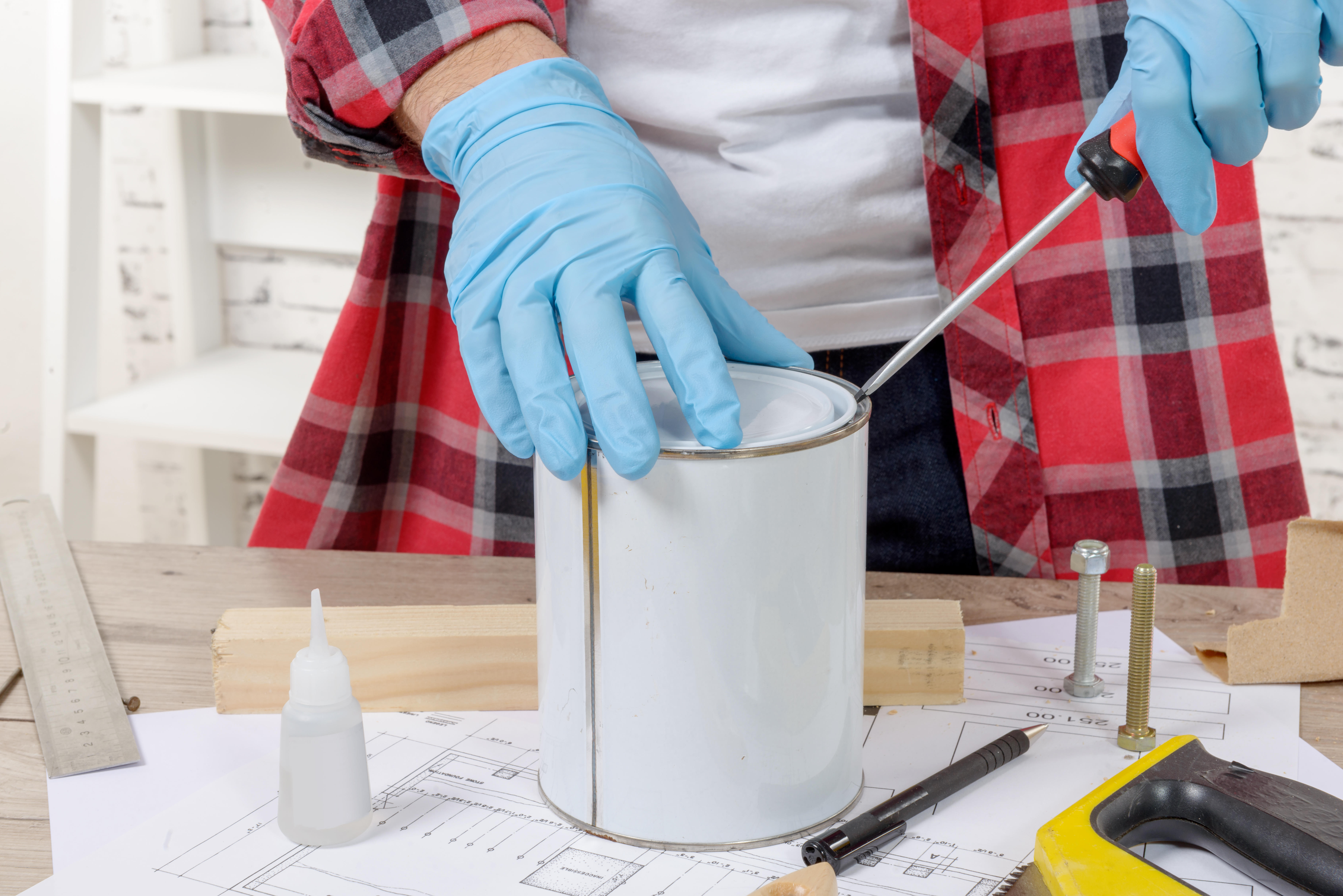How to open a paint can
We ask the experts for tips and advice on the best ways to open a paint can. Yes, there is a right way


Opening a paint can is proof that even the simplest task can become complicated if approached with too much haste and minimal thought. A heavy-handed manner runs the risk of damaging the tin, spilling the paint or experiencing slow leakages from the can. Whilst too gentle a touch will make the process unnecessarily long and complicated.
Since it’s likely to be one of the first things you do when preparing to paint a room, make sure you know how to open a paint can properly. And of course, there’s more than one way to tackle the task. Here, our experts advise.
How to open a paint can

Before you open the tin, ensure you have placed it on a flat surface with dust sheets and protectors around. Store away any precious ornaments and collectables that you don’t want to get splashes or splatter on.
Make sure you are dressed in appropriate clothes for decorating. Something old, loose and breathable is ideal.
Whatever the paint finishes you are working with, paint cans are normally made from tin or plastic or a combination. All types of paint cans need to be opened in the same manner.
Use a professional painter’s knife to open a paint can
If you’re about to embark on more than one painting project – from jobs like painting walls up to painting a house exterior – Yuriy Kryvenka from New Jersey-based painting and decorating service, Hoboken Painter, recommends investing in a professional painter's knife. ‘It’s great for opening paint cans, squeezing the roller covers from paint, scraping paint stops from the floor and many other tasks,' he says.
In order to open the paint can effectively, simply wedge the flat section of the knife under the lid of the paint can and use the knife to 'lever off the lid' as Helen Shaw, Benjamin Moore UK Director explains. You will hear a small pop from the lid. This confirms the paint can is successfully open.
Design expertise in your inbox – from inspiring decorating ideas and beautiful celebrity homes to practical gardening advice and shopping round-ups.
Use a flat head screwdriver to open a paint can
A flat head screwdriver is a remarkably effective way to open a paint can. Ensure the flat edge is placed under the lid of the paint can, then gently pry the lid away from the can. Repeat the process until you can feel that the lid can easily be lifted off.
Use a knife to open a paint can
If you don’t have a flat head screwdriver, you may be able to use either a butter knife or traditional knife, provided it has a flat edge and feels strong enough. Anything too sharp could run the risk of damaging the tin. Again, place the flat edge under the lid area and prise the can open.

How can I open a paint can without tools?
If you cannot find any suitable knives or screwdrivers you may be able to open the can with a spoon or a metal key. This is provided the spoon is sturdy enough to take the pressure of you prying away the lid. The metal key should be strong enough, but try to find one with a fairly long edge so it can easily slip under the lid of the paint can.
How to open a can of paint that won't open?
Encountered a particularly stubborn old can of paint, that simply refuses to be opened? Before you go out and buy a new can of paint, try one (or all) of these methods.
Firstly ensure you clean all the dried paint off the can with a razor knife or something similar. Then use a hammer to tap at the edge of the screwdriver to apply more force.
If the can still won’t open, try soaking the can in warm water for 10 mins to soften the paint around the lid.
Replacing the lid of your paint can
Once you’ve finished your painting project, it’s imperative that you wipe the edge of the paint can clean; this helps to prevent the lid from sticking to the excess paint and becoming difficult to open in future when you need it for tasks such as touching up paint on walls.
Helen Shaw, UK Director of Benjamin Moore warns 'not to damage the lid' when you open or close your paint can as 'it will let air seep in, meaning any leftover paint you want to keep may dry out over time.'
What is the best way to store paint?
Store paint in a cool, dry place and be sure to keep out of direct sunlight. Ensure that the temperature in your chosen location stays above freezing. When the time does come to get rid of it, be sure to dispose of paint safely and conscientiously.

Steph Hendries is a freelance journalist who has contributed to many different interiors websites including Homes & Gardens, Ideal Home and Livingetc. She has also worked on a range of social content for property brands such as Zoopla and Boomin. Steph writes for Homes & Gardens Solved section, concentrating on DIY, how to, cleaning and organizing content.